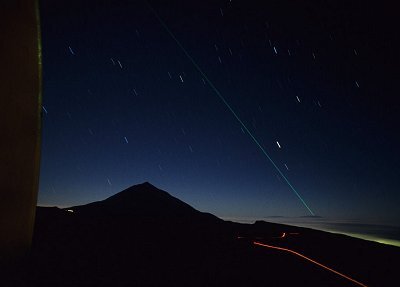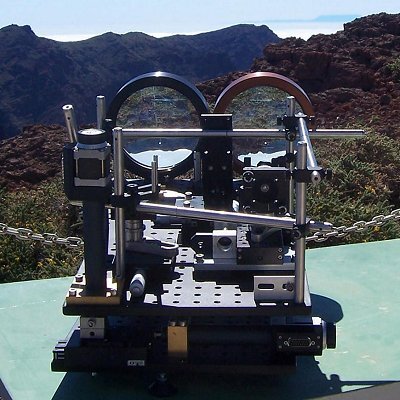ESA takes steps toward quantum communications
A team of European scientists has proved within an ESA study that the weird quantum effect called 'entanglement' remains intact over a distance of 144 kilometres.
The experiment allows ESA to take a step closer to exploiting entanglement as a way of communicating with satellites with total security.
Quantum entanglement is one of the many non-intuitive features of quantum mechanics. If two photons of light are allowed to properly interact with one another, they can become entangled. One can even directly create pairs of entangled photons using a non-linear process called Spontaneous Parametric Down Conversion (SPDC).
Those two entangled photons can then be separated but as soon as one of them interacts with a third particle, the other photon of the pair will change its quantum state instantaneously. This happens according to the random outcome of the interaction, even though this photon never did interact with a third particle.
Such behaviour has the potential to allow messages to be swapped with complete confidence. This is because, if an eavesdropper listens into the message, the act of detecting the photons will change the entangled partner. These changes would be obvious to the legitimate receiving station and the presence of the eavesdropper would be instantly detected.

A quantum communications system would be a valuable way to transmit banking information, or military communications, or even to distribute feature films without the fear of piracy.
Even though entanglement has been known about for decades, no one has known whether the entanglement decays over long distance. For example, would a beam of entangled photons remain entangled if it passed through the atmosphere of Earth? On their journey, the photons could interact with atoms and molecules in the air. Would this destroy the entanglement?
If so, entanglement would be useless as a means of communicating with satellites in orbit, because all signals would have to pass through the Earth's atmosphere. Now, an Austrian-German led team have proved conclusively that photons remain entangled over a distance of 144 kilometres through the atmosphere. That means that entangled signal will survive the journey from the surface of Earth into space, and vice versa.
In September 2005, the European team aimed ESA's one-metre telescope on the Canary Island of Tenerife toward the Roque de los Muchachos Observatory on the neighbouring island of La Palma, 144 kilometres away. On La Palma, a specially built quantum optical terminal generated entangled photon pairs, using the SPDC process, and then sent one photon towards Tenerife, whilst keeping the other for comparison.
Upon comparing the results from Tenerife with those from La Palma, it was obvious that the photons had remained entangled. "We were sending the single-photon beam on a 144-kilometre path through the atmosphere, so this horizontal quantum link can be considered a 'worst case scenario' for a space to ground link," says Josep Perdigues, ESA's Study Manager.

Additional tests with a quantum communication source that generated faint laser pulses instead of entangled photon pairs were performed in 2006. Faint laser pulse sources emulate single photon sources by attenuating the optical power of a standard laser down to single photon regime. Attenuated lasers are technologically much simpler than entangled photon sources or 'true' single photon sources.
The price you have to pay is the unwanted opportunity for information leakage, due to the non-zero probability of having more than one photon per pulse. In practice, this limits the maximum link distance for exchanging securely a key. By implementing a decoy-state protocol in the experiments using a faint laser pulse source, the maximum link distance (yet secure against an eavesdropper’s action) was extended to values representative of a space to ground experiment.
The team are now studying ways to take the experiment into space. "Being in space will mean that we can test entanglement over lines of sight longer than 1000 kilometres, unfeasible on Earth, thereby extending the validity of Quantum Physics theory to macroscopic scales," says Perdigues. One option is to use the external pallet on the Columbus module of the International Space Station. Another would be to put the quantum optical terminal on a dedicated satellite of its own. The quantum optical terminal is about 100 kg in mass and fits into a one-cubic-metre box.
For more information please contact:
Josep Maria Perdigues Armengol
ESA Optics Division Technical Officer
josep.maria.perdigues.armengol @ esa.int
Clovis Jacinto de Matos
General Studies Officer
Institutional Matters and Strategic Studies Office
clovis.de.matos @ esa.int




